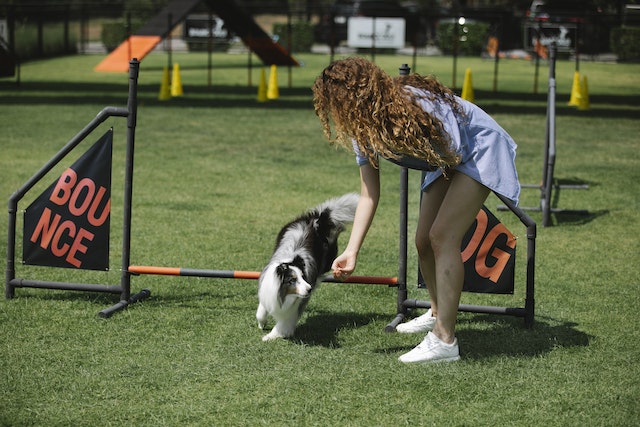Regular exercise and physical activity are essential for the well-being of our beloved pets. Engaging in physical exercise not only helps them maintain a healthy weight but also promotes mental stimulation strengthens the bond between pet and owner and prevents behavioral problems. In this comprehensive guide we will delve into the importance of exercise and fitness for pets offering valuable insights and practical tips to keep your furry friends active and thriving.
The Benefits of Exercise for Pets
- Physical Health: Just like humans pets need physical activity to maintain good overall health. Regular exercise helps improve cardiovascular fitness muscle strength and joint flexibility. It also aids in weight management reducing the risk of obesity-related conditions.
- Mental Stimulation: Exercise provides mental stimulation and helps alleviate boredom in pets. Engaging in physical activities helps prevent behavioral issues caused by pent-up energy such as excessive barking chewing or digging.
- Bonding Opportunity: Participating in exercise routines with your pet strengthens the bond between you and your furry companion. Shared activities create trust enhance communication and foster a deeper connection.
- Socialization: Certain forms of exercise such as dog park visits or group walks offer opportunities for socialization with other pets and their owners. Socialization promotes positive behavior reduces anxiety and improves overall well-being.
Tailoring Exercise to Your Pet’s Needs
- Consult with Your Veterinarian: Before starting any exercise regimen consult with your veterinarian to ensure your pet is healthy enough for physical activity. Certain breeds or pets with underlying health conditions may require modifications or specific exercise recommendations.
- Consider Age Breed and Size: Different pets have varying exercise requirements based on their age breed and size. Puppies and young dogs typically have more energy and may need shorter bursts of intense play while senior pets may require gentler exercises. Research breed-specific exercise needs and adapt accordingly.
- Choose the Right Activities: Select activities that cater to your pet’s preferences and physical abilities. Some common forms of exercise include walking jogging swimming playing fetch interactive toys agility training and obedience training. Mix and match activities to keep it fun and engaging.
- Gradual Progression: Start with shorter exercise sessions and gradually increase the duration and intensity over time. This allows your pet to build stamina and avoid potential injuries from overexertion. Monitor their behavior and adjust accordingly.
- Environmental Considerations: Be mindful of the environment and weather conditions when exercising your pet. Avoid extreme heat or cold and be cautious of hot pavement or rough terrains that could harm their paws. Provide shade water and rest breaks when needed.
- Supervision and Safety: Always supervise your pet during exercise sessions. Use a secure leash or harness especially in outdoor areas to prevent them from wandering off or getting into dangerous situations. Use appropriate safety gear such as life jackets for water activities.
Making Exercise Fun and Engaging
- Interactive Toys and Puzzles: Incorporate interactive toys and puzzles that engage your pet’s mind and encourage physical activity. Treat-dispensing toys or puzzle feeders can keep them entertained while stimulating their problem-solving skills.
- Variety and Rotation: Introduce variety in your pet’s exercise routine to prevent boredom. Rotate between different activities locations and toys to keep them excited and motivated.
- Positive Reinforcement: Use positive reinforcement techniques such as praise treats or playtime to reward your pet during and after exercise sessions. This reinforces positive behavior and makes the experience enjoyable for them.
- Playdates and Group Activities: Arrange playdates with other pets or join group activities to provide socialization opportunities for your furry friend. This not only promotes exercise but also encourages healthy interactions with other animals.
- Training as Exercise: Incorporate obedience training exercises during walks or play sessions. Training not only enhances their mental stimulation but also reinforces good behavior and strengthens the bond between you and your pet.
Prioritizing Safety and Well-being
- Hydration: Ensure your pet has access to fresh water before during and after exercise. Hydration is crucial for their overall health and helps regulate body temperature.
- Rest and Recovery: Allow your pet sufficient rest and recovery time between exercise sessions. Overexertion can lead to fatigue muscle strains or injuries. Pay attention to any signs of exhaustion or discomfort.
- Regular Veterinary Check-ups: Schedule regular check-ups with your veterinarian to monitor your pet’s overall health and address any concerns. They can provide valuable guidance on exercise routines nutrition and specific health considerations.
Conclusion
Regular exercise and fitness play a vital role in maintaining the well-being of our beloved pets. By incorporating physical activities tailored to their needs we can promote their physical and mental health strengthen our bond with them and prevent behavioral issues. Remember to consult with your veterinarian and make exercise enjoyable and engaging for your furry friend.







